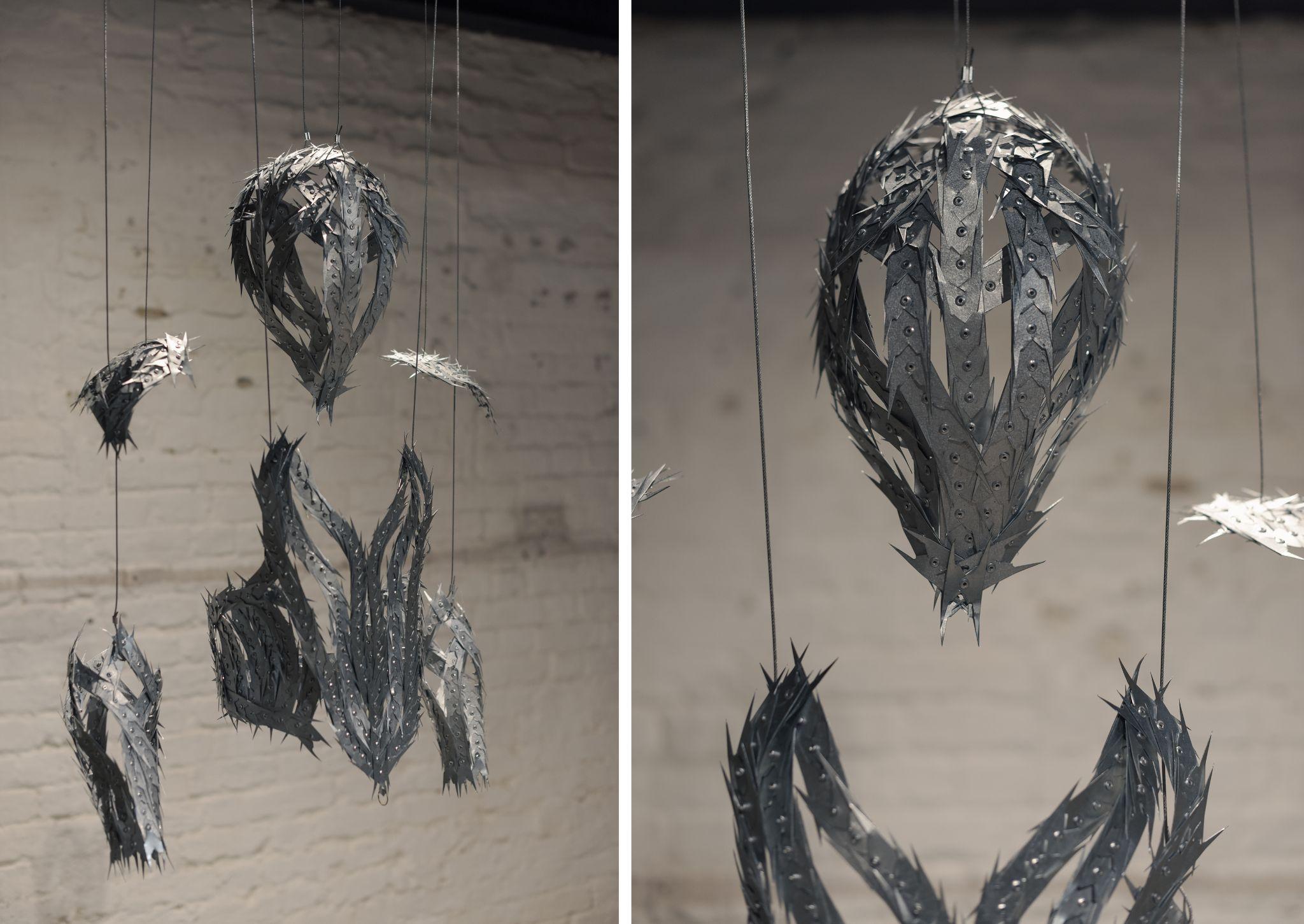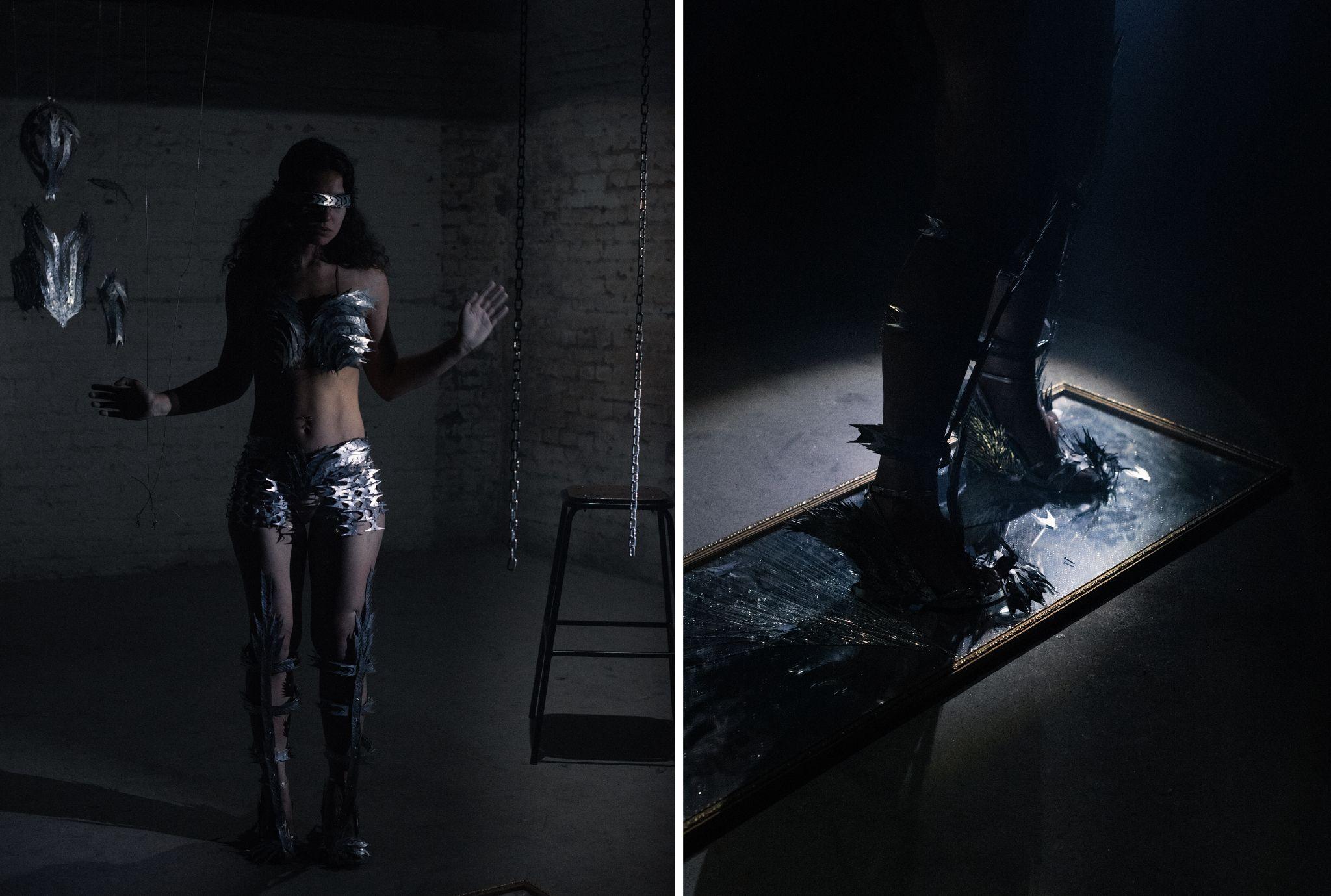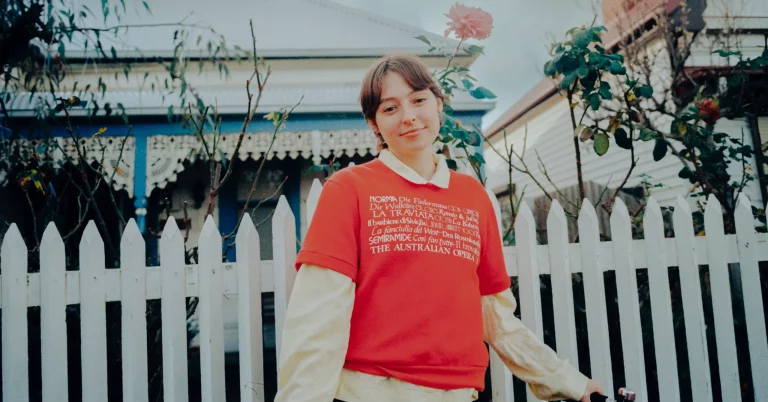Finnish-born visual artist Vespera Xander constructs sculptural forms of armour by assembling them from fragments of razor wire—each one formerly part of a sprawling razor wire coil. These dangerous remnants, arranged piece by piece, accumulate into sharp, gleaming surfaces reminiscent of scales on a cyborgian creature. While her references reach back to medieval and renaissance body armour, Vespera’s vision points decidedly towards a speculative post-human future.
After earning her MA degree in Fine Art from Central Saint Martins in 2023, Vespera has participated in multiple group exhibitions and presented her first solo show in London. Alongside her metalwork, she is also expanding her practice into jewellery making, applying hand-forging techniques in brass and precious metals to further explore the boundaries between adornment, protection, and weaponry.


Her debut solo exhibition, Pleasure Principle, opened on October 30, 2024, at Metamorphika Studio in Hackney. The show marked a significant evolution in her practice, featuring both razor-wire sculptures and a first look at her jewellery. Suspended from the ceiling, a commanding work titled CBT–65 II dominated the gallery space: a twisting constellation of razor wire riveted into the form of a helmet and upper body armour.
The pointed silhouettes prompt unsettling questions. Who is this armour for? Is it ever meant to be worn?
At the exhibition’s opening night, the armour found its wearer in performance artist Marina Teodora, in a 12-minute piece directed by Vespera titled CBT–65 Angel. Dressed in black, a cloaked figure assisted Teodora into her armour, completing the ritual with a spiked Razor Crown in what felt like an underground coronation. Once transformed into the “Angel,” the heels of her razor boots against the concrete floors unleashed piercing screeches that echoed through the space.
As tension built through an ominous soundtrack, the Angel encountered a mirror laid flat on the floor. With forceful stomps, she shattered its surface, sending shards of light across the room. Her thigh-high boots, once pristine and fearsome, collapsed into mangled wreckage. In the closing moments, she retreated through the crowd, dragging her disfigured blades behind her—the sound of scraping metal haunting the silence that followed.


In May 2025, Vespera co-curated The Nonexistent Knight, a group exhibition also held at Metamorphika Studio. Inspired by Italo Calvino’s 1959 novel of the same name, the show invited twelve artists to reinterpret armour and chivalry. Calvino’s protagonist, Agilulf—a knight with no physical body but impeccable discipline—serves as a poetic metaphor. Vespera’s contribution, All That Glitters Is Not Gold, was a gauntlet made in mirror-polished brass, along with hand engraved gothic lettering. The engraving evokes associations with gang tattoos as much as renaissance etching, subverting traditional decorative norms with darker symbolism. The golden gleam of the gauntlet contradicts its message: surface appearances conceal deeper threats.
The metaphor of Agilulf—the immaculate knight who exists only through the force of his will and the rituals of knighthood—resonates deeply within Vespera’s work. In The Nonexistent Knight, Calvino writes: “He was a perfect knight. Not a flaw, not a stain. Only he did not exist.” This idea of presence without human substance mirrors the physicality of Vespera’s sculptures. Her armours are immaculate, gleaming, and crafted with precision, yet fundamentally hollow. Like Agilulf, they perform identity through surface and ritual. For Vespera, the armour becomes a mechanical surrogate for the psyche—a menacing form we inhabit to protect ourselves. This theme had already begun to surface during Pleasure Principle, where CBT–65 II hovered in the crypt-like gallery space—its lonely figure conjuring the same existential tension between physical perfection and inner vacancy.


Vespera views her recent shift from razor-wire to wearable forms as a gesture toward “dissolving the boundary between sculpture and jewellery.” This interplay between elegance and aggression is strikingly present in her jewellery work, where motifs of self preservation condense into intimately scaled forms. One of her recent pieces, Blade Double—a double-ring resembling a knuckle duster, handcrafted in polished sterling silver—transforms the language of violence into an object of adornment. Worn across two fingers, the piece asserts itself as both decoration and defense, blurring the line between jewellery and weaponry. As with her sculptural armour, there’s a performative dimension: the wearer becomes a participant in the work’s paradox, carrying beauty and intimidation in a single gesture.
Ultimately, Vespera Xander’s practice builds an armoury for the vulnerable and the vengeful alike—where even a ring can become a weapon. Her universe is one where chivalry collapses into rebellion, and fallen angels and modern-day knights alike await their return, ready to be summoned back to life.








